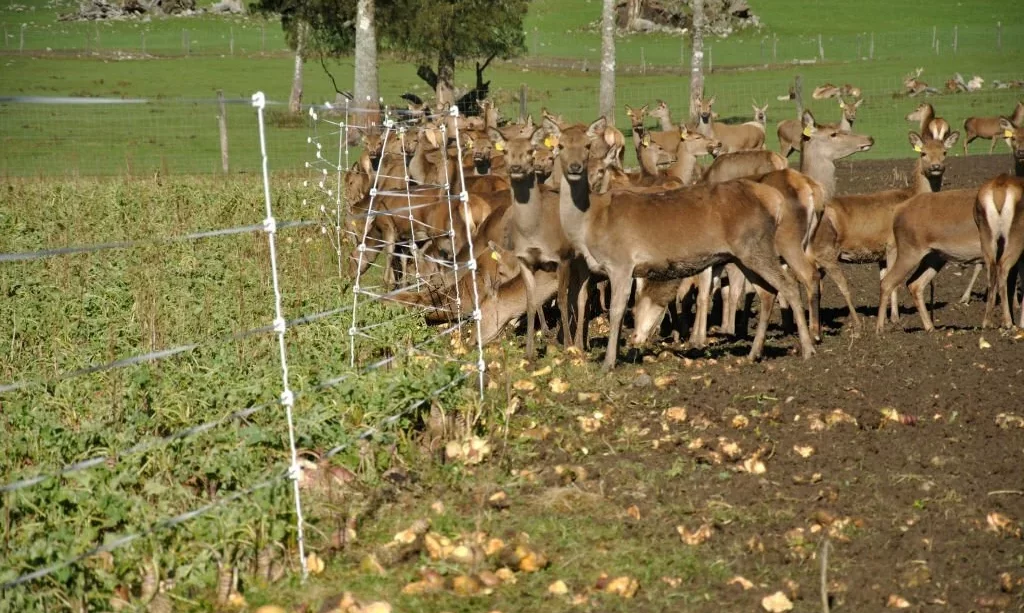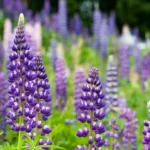For many wildlife enthusiasts and hunters, planting turnips for deer has become a strategic and rewarding endeavor. Turnip food plots not only provide deer with a nutrient-rich food source but also offer a promising location for observing and hunting these magnificent creatures. However, successful turnip food plots depend on more than just the choice of seeds; they require careful planning and consideration. In this guide, we will explore the crucial element of timing – specifically, when to plant turnips for deer. Understanding the significance of when to plant and choosing the right location are the first steps toward creating thriving turnip food plots that both benefit deer and enhance your hunting experience. Let’s embark on this journey into the world of planting turnips for deer, starting with the vital choice of location.
- Includes Tall Tine Turnip – a NEW TURNIP VARIETY genetically developed by Whitetail Institute
- SIX YEARS in research, development and testing
- Two food sources – foliage above ground and tubers underground
- EXTREMELY drought and cold tolerant – Establishes and grows rapidly
- Considered by many to be the most effective late food plot product available
Choosing the Right Location
Selecting the right location for your turnip food plot is paramount to its success. Deer are creatures of habit, and their feeding patterns are influenced by several factors. When choosing a location, consider the following:
- Soil Quality: Opt for well-drained, fertile soil with a pH level of 6.0 to 6.5, as turnips thrive in these conditions. Conduct a soil test to determine the need for any necessary amendments.
- Sunlight: Turnips require plenty of sunlight for healthy growth. Choose an area with a minimum of 6 to 8 hours of direct sunlight daily.
- Drainage: Adequate drainage is essential to prevent waterlogged soil, which can damage turnip crops. Avoid areas prone to water stagnation.
- Distance from Cover: Locate your food plot within a reasonable distance from deer cover and bedding areas. Deer prefer to feed in areas where they feel safe, making your food plot more appealing.
- Accessibility: Ensure that your chosen location is accessible for planting and maintenance, as well as for observing and hunting deer. Choosing the right location sets the stage for a successful turnip food plot that attracts and benefits deer. It’s a crucial first step in the process of enhancing deer populations and creating an ideal hunting environment.
Ideal Planting Time
When it comes to planting turnips for deer, timing is of the essence. The ideal planting time can vary depending on your region and climate. In general, you have two primary options: spring planting and fall planting. Spring planting offers deer a nutritious early-season food source, while fall planting provides sustenance during the late season and winter months. To determine the best planting time for your area, it’s essential to consider your region’s climate and the feeding habits of the local deer population. Understanding these factors will help you make an informed decision about when to sow your turnip seeds to benefit both deer and your hunting endeavors.
- Fast Growing Brassica
- Easy to grow with minimal maintenance
- Excellent fall forage for wildlife
- Thrives through frost and cold temperatures
- Provides high-protein forage into the winter months
Spring Planting
Spring planting is a strategic choice for those looking to provide deer with early-season sustenance. It typically involves planting turnip seeds in late winter to early spring, ensuring that young turnip greens are available as soon as deer emerge from winter’s grasp. Spring planting allows deer to enjoy tender, nutritious greens when they need them most. To successfully plant turnips in the spring, prepare your soil in advance by clearing the area of weeds and debris. Ensure the soil is well-drained, and sow the seeds at the recommended depth. As the weather warms, your turnip greens will flourish, providing deer with a delectable food source during the critical early growth period. Spring planting is an excellent choice for supporting deer health and maintaining a robust population in your hunting grounds.
Fall Planting
Fall planting, on the other hand, focuses on providing deer with sustenance during the late season and winter months. Planting turnips in late summer to early fall ensures that mature turnips are available when other food sources may become scarce. This is particularly important for deer as they prepare for the challenges of winter. To begin fall planting, prepare your soil in the late summer, making sure it’s well-drained and free from weeds. Plant your turnip seeds at the recommended depth, and as the season progresses, the turnip bulbs will develop. As the weather cools and the first frosts arrive, the sugars in the turnips become more concentrated, making them even more attractive to deer. Fall planting is a thoughtful choice for providing deer with a reliable food source during the later months of the year, helping them stay strong and healthy throughout the hunting season.
Understanding the difference between spring and fall planting allows you to tailor your turnip food plot to the specific needs of the local deer population and the demands of the hunting season. These planting options offer both early-season and late-season benefits, ensuring that your turnip food plot remains a valuable asset in wildlife management and deer hunting.
Maintenance and Care
The work doesn’t end with the planting season when you’re cultivating turnip food plots for deer. Ongoing maintenance is essential to ensure a healthy and attractive food source for deer year-round. Regularly monitor your food plots to identify and address any issues promptly. This includes weeding to prevent competition for resources and maintaining the health of your turnip crop. Fertilization is also crucial to provide essential nutrients. Additionally, consider disease prevention measures to protect your turnips from potential threats. Maintaining your food plot ensures that it remains a consistent source of sustenance, benefiting the local deer population and enhancing your hunting experience.
Attracting and Hunting Deer
The establishment of a thriving turnip food plot is not only about providing sustenance for deer but also about attracting and hunting them. Consider the strategic placement of deer stands or hunting blinds near your food plot. These should be well-concealed and positioned downwind from where you expect deer to approach. Utilize trail cameras to monitor deer activity and patterns in the area, helping you plan your hunts effectively. Remember that a well-maintained food plot not only enhances the nutrition of deer but also increases their time spent in the vicinity, making it an ideal location for observing and hunting these magnificent creatures.
Conclusion
Planting turnips for deer is a rewarding endeavor that contributes to wildlife management and enhances the hunting experience. However, the success of your turnip food plot is intricately tied to when you plant, where you plant, and how you maintain it. Spring planting offers early-season sustenance, while fall planting ensures late-season food sources. Both approaches cater to the dietary needs of deer throughout the year. Regular maintenance, including weeding, fertilization, and disease prevention, guarantees the food plot’s longevity and appeal. Lastly, strategic placement of hunting stands and blinds near your food plot is essential for making the most of your hunting opportunities. By understanding the timing, location, and care required for turnip food plots, you can create a thriving habitat that benefits deer and adds excitement to your hunting adventures. Remember that every turnip plot you cultivate is not just a plot; it’s a sanctuary for deer and a cornerstone of your hunting experiences.





